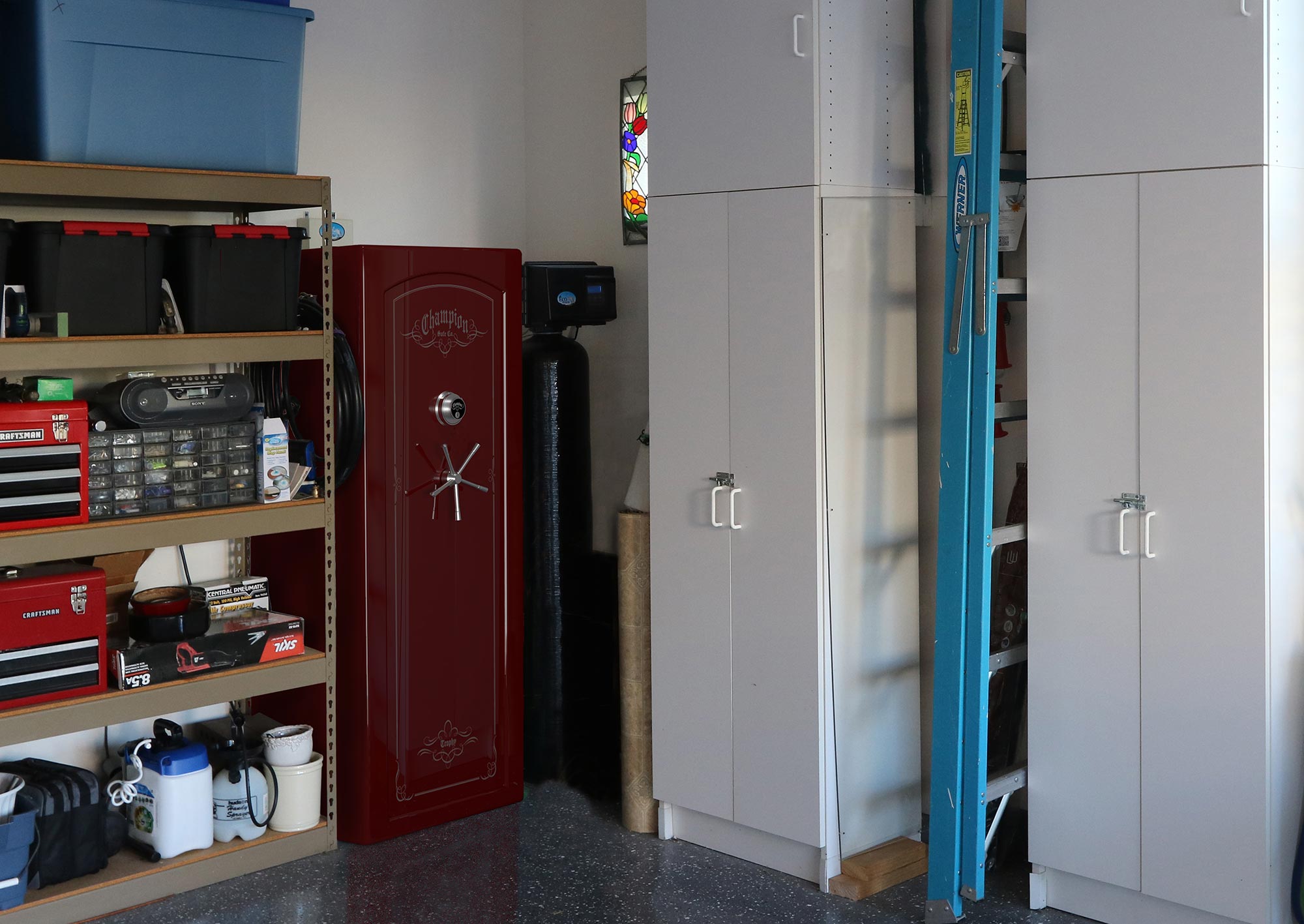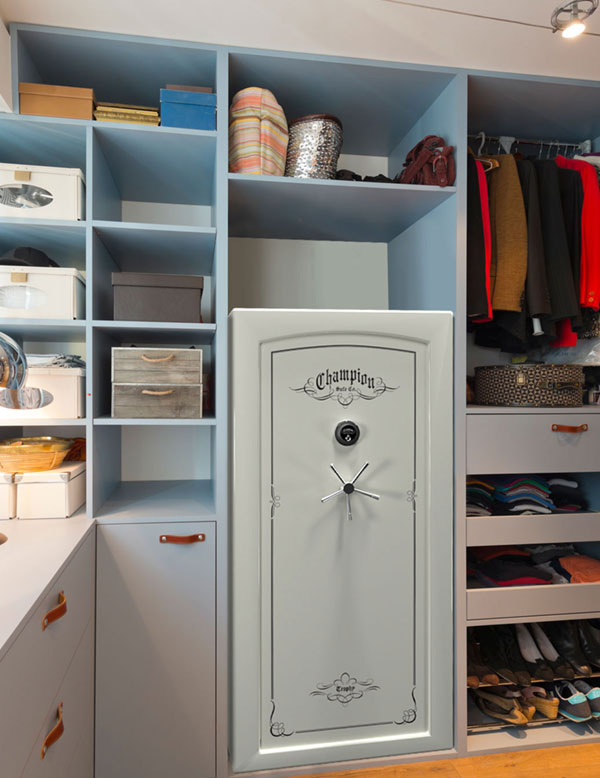
Installing a Gun Safe at Home

Keep your firearm collection secure by installing a gun safe in your home. Look for a safe that is well constructed of thick gauge steel, making it fireproof and heat resistant so your valuable guns are protected. A well-built, high-quality best gun safe will be heavy and installing one yourself in your home may seem like a daunting task, but it can be done. These tips will guide you through the process.
Find a Good Location in Your Home
Finding the best location for your gun safe can be tricky. Humidity and other environmental factors can damage the components of your gun safe as well as its
contents. It is best on a concrete slab, such as in the basement, but that isn’t always practical due to high humidity in this area in many homes. A
dehumidifier works to keep moisture down if that is the only location.
The basement is a prime location though. It is generally a protected area, less likely to succumb to fire and no thief is going to want to lug a heavy gun
safe up a bunch of stairs. Bolting it to the floor in the garage is another option, or you can put it in a room on the first floor of your home. The key is
placing it in a location that is out of the way so that the safe is inconspicuous.
Make a Clear Path When Moving Your Gun Safe
If you’ve never moved something this heavy or large before, you may want to ask for help, especially if you need to maneuver it downstairs. There are professionals who are highly skilled at moving large, heavy items like a safe. If you decide to move the safe yourself, follow these steps:
- Clear the way. If someone isn’t directly involved in moving the safe, they need to leave the area. This includes pets, children, friends who want to watch you move a heavy gun safe, and spouses who want to make sure you are doing it right.
- Get the right tools. No need to make a huge investment; you can rent a dolly. Just make sure it is appropriate for the job. Heavier gun safes will need a heavy-duty dolly. Lighter gun safes do just fine with a moving dolly.
- Protect your floors. Heavy items on dollies put a tremendous amount of pressure on the tiny wheels. This can damage your flooring, particularly hardwood and ceramic tiles. Place sheets of plywood in your path to keep from damaging your floors.
Make Sure the Floor is Properly Supported
The best gun safes are constructed with American made steel. It is thick, sturdy, and HEAVY. There are two weight types that structures are rated to support: static or dead loads and live loads. Live loads are mobile, they don’t stay in one place; think people or pets. There are more restrictions regarding structure support for live loads. Gun safes are dead load weights so you have a little more leeway in the placement. A good rule of thumb, though, if you are installing your safe on an upper floor, you should ensure that your floors are built to handle the load of your gun safe.
Removing the Gun Safe From the Shipping Pallet
Transitioning your safe from the shipping pallet to the dolly is a critical point in installation. Before you do anything, test the combination and lock. The
last thing you want is to get the safe off of the pallet and, worse, get it installed, only to find that you can’t get into it because the combination and
lock don’t work. Do not remove the safe doors, this can damage the safe or cause injury to you and the people helping you. Make sure the safe door is closed
while you are moving it and ONLY open it when it is in an upright position.
The safe is bolted to the pallet so you will need to remove these bolts before moving it. As you face the safe while it is on the pallet, pull the tab that is
located on the front of the floor panel. It will lift and you will be able to see where it is bolted to the pallet. If you are removing the pallet yourself,
get someone to help you. The safe will need to be tipped in order to access the bolts, so use caution.
Make Sure Your Gun Safe is Level
If your gun safe is not level, the bolt and lock may not work properly. This is true for most models. Over the long term it could cause serious problems and you may have to call a locksmith or the door could become misaligned and not close properly. A safe that isn’t leveled could also be a safety hazard. The door could slam shut or even open by itself which can cause serious injury, damage to the safe’s contents, or leave your gun collection exposed and vulnerable. If you do need to level your safe, use wood shims. They are the most reliable and least likely to cause damage to your floors.
Anchoring Your Gun Safe for Stability and Security
The weight of your gun safe can make it a hazard if it isn’t anchored to the floor. If you don’t, it can shift, move, or even fall over. The best practice is to
bolt it at all four corners. This provides the most stability and security against theft. If there is some reason that you can only use two bolts, then move the
safe flush to the wall and bolt it at the rear two anchors. This will keep it in place and secure.
Before you start drilling your anchor holes for your safe, know what is under your floor and exactly where it is located. There is a lot of infrastructure that
can reside under the floor of a house including forced hot water heating pipes, water pipes, wires, HVAC ducts, sewer pipes, and many other things. If your home
has radiant ceiling or floor heating, you could hit one of your heating pipes when you drill. No matter how great the floor is for anchoring your safe if you hit
something you shouldn’t, it could be a very costly mistake.
The best foundation for bolting down a gun safe is a concrete slab. The one drawback is that concrete releases moisture. Over time, this can cause corrosion
along the bottom of the safe. This can be avoided by laying down a moisture barrier, like a firm rubber mat over the concrete, under the safe. This will protect
the steel.
Post tension concrete slabs should not be used as a foundation for a gun safe. They have steel cables running through them. These cables are under thousands of
pounds of pressure and are high-strength steel. If a cable is damaged while drilling the slab, the cable can spring loose, injuring people nearby, including you
as well as damaging anything around it. These slabs are typically labeled with a warning, “Post-Tensioned Slab, Do Not Drill Cut or Core.”
Creating ventilation under the safe is a very common practice. Some people use hockey pucks to elevate the safe just enough to allow the air to flow freely
underneath. They run their anchor bolts through the puck so that it is secure and won’t move. The problem with having a gun safe that is elevated, even just a
few inches, gives a potential thief enough room to get a pry bar under it. If you elevate your safe, block the gap underneath so it can’t be seen.
Gun Safe Electrical Connections
Many gun safes allow for environmental control and come with an installed dehumidifier as well as lights. This requires electricity, so at least part of your
consideration regarding placement should hinge on the location of the nearest electrical outlet.
At Champion Safe Company, we have the highest quality and best gun safes in the industry. We use only the high-strength, American made steel because when it
comes to our customers, only the best will do. Visit our site today and see what sets our gun safes apart from the rest. Our knowledgeable, friendly staff
will help you select the safe that best meets your needs as well as give you advice on installation and placement – or help you find a professional to install
it if that’s what you prefer. Trust your firearm collection to Champion Safe Co.
